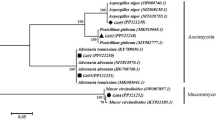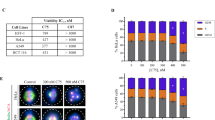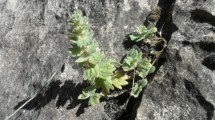Abstract
POGONOPHORA secrete and inhabit tough, horny tubes. Recently, Hyman1 quoted unpublished results indicating that the tubes of Pogonophora were composed of cellulose. In view of the presumed phylogenetic relationship of Pogonophora with lower chordates this might have been expected, since the tunicate test is rich in cellulose (tunicin). However, on examining three species of Siboglinum (S. atlanticum Southward and Southward, S. inermis Southward and Southward2, and S. caulleryi Ivanov) kindly given to us by Dr. A. J. Southward, we found the tubes to be lacking cellulose, but rich in chitin. Later, through the kindness of Academician Ivanov, we were given specimens of the tubes of Zenkevitchiana longissima Ivanov3, and the same conclusion about their composition was reached.
Similar content being viewed by others
Article PDF
References
Hyman, L. H., Biol. Bull., 114, 106 (1958).
Southward, E. C., and Southward, A. J., J. Mar. Biol. Assoc. U.K., 37, 627 (1958).
Ivanov, A. V., Zool. Jb. Abt. Syst., 85, 431 (1957).
Campbell, F. L., Ann. Ent. Soc. Amer., 22, 401 (1929).
Tracey, M. V., in Paech, K., and Tracey, M. V., “Modern Methods of Plant Analysis”, 2 (Springer-Verlag, Berlin, 1955).
Kent, P. W., and Whitehouse, M. W., “Biochemistry of the Amino-sugars” (Butterworth, London, 1955).
Stoffyn, P. J., and Jeanloz, R. W., Arch. Biochem. Biophys., 52, 373 (1954).
Author information
Authors and Affiliations
Rights and permissions
About this article
Cite this article
BRUNET, P., CARLISLE, D. Chitin in Pogonophora. Nature 182, 1689 (1958). https://doi.org/10.1038/1821689a0
Issue date:
DOI: https://doi.org/10.1038/1821689a0
This article is cited by
-
Pogonophora (Annelida): form and function
Hydrobiologia (2005)
-
Vorkommen, zusammensetzung und feinstruktur peritrophischer membranen im tierreich
Zeitschrift f�r Morphologie der Tiere (1968)



